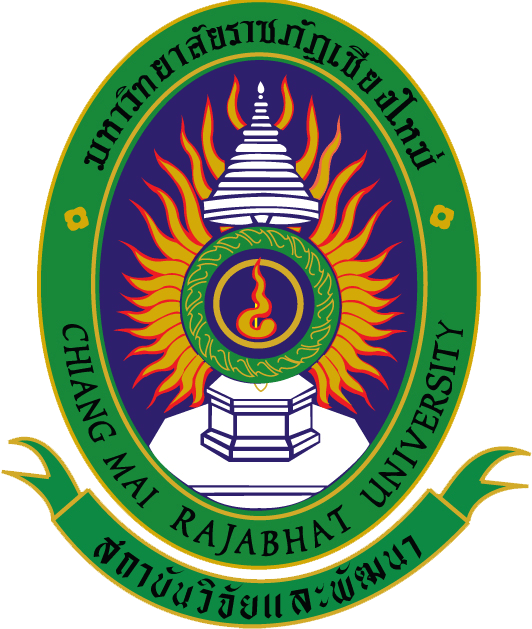
ระบบสารสนเทศงานวิจัย สถาบันวิจัยและพัฒนา มหาวิทยาลัยราชภัฏเชียงใหม่
Research Information System(RIS)
ปัจจัยที่ส่งผลต่อความเป็นพลเมืองดิจิทัลที่มีประสิทธิภาพในมิติด้านการสื่อสารและมิติด้านมารยาทดิจิทัลของกลุ่มวัยรุ่นและวัยทำงานในเขตพื้นที่จังหวัดเชียงใหม่
อาจารย์อัญมณี ภักดีมวลชน
คณะวิทยาการจัดการ
คำสำคัญ :
เลขทะเบียน :
1619-65-MGT-CMRU
บทคัดย่อ
การวิจัยนี้มีวัตถุประสงค์ 1) เพื่อศึกษาความเป็นพลเมืองดิจิทัล มิติด้านการสื่อสารดิจิทัล และมิติด้านมารยาทดิจิทัลของกลุ่มวัยรุ่นและวัยทำงาน 2) เพื่อศึกษาเปรียบเทียบลักษณะความเป็นพลเมืองดิจิทัล มิติด้านการสื่อสารดิจิทัลและมิติด้านมารยาทดิจิทัลของกลุ่มวัยรุ่นและวัยทำงาน และ 3) เพื่อศึกษาอิทธิพลของลักษณะประชากรศาสตร์ พฤติกรรมการเปิดรับเทคโนโลยีดิจิทัล และบุคลิกภาพกับความเป็นพลเมืองดิจิทัล มิติด้านการสื่อสารดิจิทัล และมิติด้านมารยาทดิจิทัล ของกลุ่มวัยรุ่นและวัยทำงาน ผู้วิจัยใช้วิธีวิจัยเชิงปริมาณ โดยวิธีเชิงสำรวจ ด้วยวิธีการเก็บข้อมูลด้วยแบบสอบถาม กลุ่มตัวอย่างกลุ่มวัยรุ่นและวัยทำงาน จำนวน 400 คน ในเขตพื้นที่จังหวัดเชียงใหม่ ผลการวิจัยพบว่า 1) ระดับความความเป็นพลเมืองดิจิทัล มิติด้านการสื่อสารดิจิทัล และมิติด้านมารยาททางดิจิทัล ค่าเฉลี่ยรวมอยู่ในระดับมาก (x = 3.58, S.D.=0.59) 2) กลุ่มวัยรุ่น และกลุ่ม วัยทำงานมีลักษณะความเป็นพลเมืองดิจิทัล มิติด้านการสื่อสารดิจิทัลและมิติด้านมารยาทดิจิทัล ไม่แตกต่างกัน (t=1.585, sig=.209) และ 3) ความพึงพอใจในการใช้สื่อดิจิทัล บุคลิกภาพด้านการควบคุมตนเอง การศึกษา และประสบการณ์ในการเปิดรับสื่อ (ปี) มีอิทธิพลต่อความเป็นพลเมืองดิจิทัล มิติด้านการสื่อสารดิจิทัล และมิติด้านมารยาทดิจิทัลของกลุ่มวัยรุ่นและวัยทำงาน (R2=13.00)
Abstract
The objectives of this research were 1) to study digital citizenship, digital communication dimension, and digital etiquette dimension among adolescents and working adults and 2) to compare the characteristics of digital citizenship, the dimension of digital communication, and the dimension of digital manners among adolescents and working people, and 3) to examine the influence of demographic characteristics, digital technology exposure behavior, and personality on digital citizenship, the digital communication dimension, and the digital etiquette dimension among adolescents and working adults. The researcher used a quantitative research method using a survey method, collecting data using questionnaires. The sample was a group of 400 adolescents and working people in the Chiang Mai area. The results showed that 1) the level of digital citizenship, digital communication dimension, and digital etiquette dimension were all averaged at a high level (x= 3.58, S.D. = 0.59). 2) Adolescents and working-age groups had no difference in digital citizenship, digital communication, and digital etiquette dimensions (t=1.585, sig=.209). Furthermore, 3) digital media satisfaction, Personality in self-control, education, and media exposure experience (years) influenced digital citizenship, digital communication, and digital etiquette. Adolescents and working age groups (R2=13.00)
ไฟล์งานวิจัย
7 18 ส.ค. 2565
กองทุนวิจัย มหาวิทยาลัยราชภัฏเชียงใหม่
202 ถ.ช้างเผือก ต.ช้างเผือก อ.เมือง จ.เชียงใหม่ 503000
053-88-5555